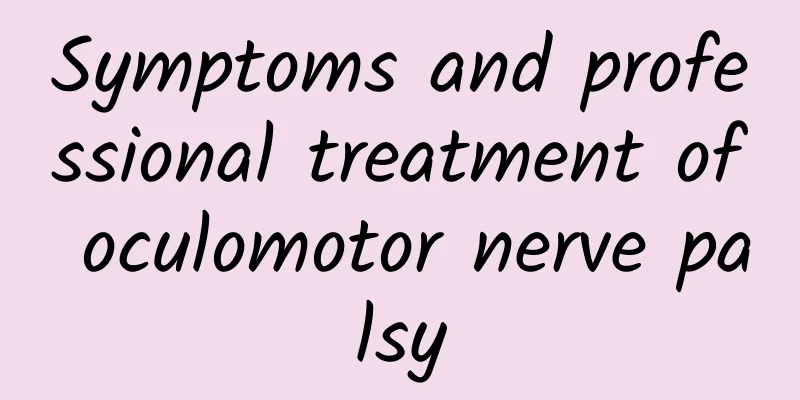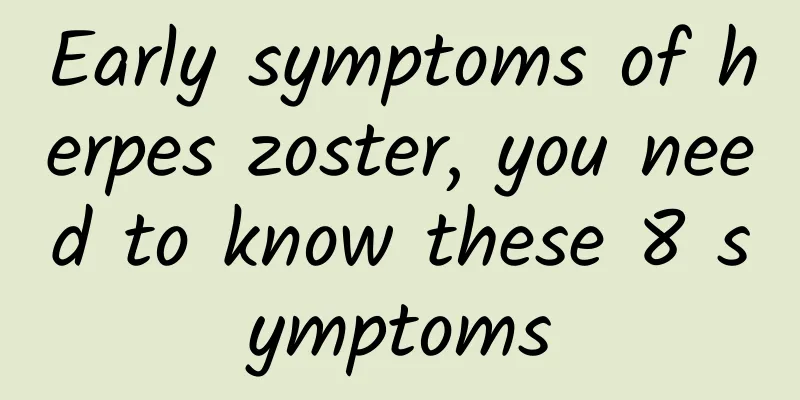Symptoms and professional treatment of oculomotor nerve palsy

|
Oculomotor nerve paralysis is not uncommon. If there are no other progressive diseases, the patient can usually recover on his own within a few months. The focus of treatment is to deal with the original cause and relieve the symptoms, eliminate binocular diplopia, and correct ptosis, which are the focus of ophthalmological treatment. Congenital oculomotor nerve palsy: This type is less common and most cases occur in one eye. It is caused by developmental abnormalities or birth injuries. Acquired oculomotor nerve palsy: Although acquired oculomotor nerve palsy is more common than congenital oculomotor nerve palsy, it is less common among the three pairs of cranial nerves related to eye movement. Clinically, paralysis of the oculomotor nerve branches is more common than oculomotor nerve paralysis. Paralysis of the superior branch of the oculomotor nerve is more common than paralysis of the inferior branch. Specific causes include: 1. Brainstem lesions 2. Vascular Disease 3. Tumor IV. Trauma 5. Demyelinating Disease 6. Inflammatory environment 1. Meningitis 2. Encephalitis 3. Polyneuritis caused by alcohol, lead, arsenic and carbon monoxide poisoning or diabetes 4. Herpes zoster virus infection 5. Echovirus infection VII. Others 1. Anterior communicating artery aneurysm 2. Bilateral chronic subdural hematoma 3. Congenital toxoplasmosis 4. Measles vaccination 5. Myasthenia gravis 6. Ophthalmoplegic migraine 7. Polyarteritis nodosa, etc. can cause Professional treatment telephone number for oculomotor nerve palsy: 0371-66362367 If not treated in time, it can also cause some complications, such as: 1. Strabismus The oculomotor nerve innervates several extraocular muscles and intraocular muscles. Oculomotor nerve palsy manifests as paralysis of one or more of the superior rectus, inferior rectus, medial rectus and inferior oblique muscles of the eye on the same side as the lesion. Different eye muscle dysfunctions can cause changes in eye position. 2. Ptosis Since the levator palpebrae superioris muscles are innervated by the oculomotor nerve, complete and incomplete ptosis often occurs after oculomotor nerve palsy. 3. Amblyopia Congenital oculomotor nerve palsy or partial acquired oculomotor nerve palsy can cause amblyopia due to abnormal visual development caused by long-term ptosis. The treatment of oculomotor nerve palsy is to find out the original cause and to make necessary and appropriate treatment for the cause. For oculomotor nerve palsy caused by simple small-scale infarction, most patients will recover naturally. Only some patients need to receive strabismus or eyelid correction at six months. While waiting for the nerve to repair, binocular diplopia often causes trouble for patients. |
<<: What are the common causes of diaphragmatic paralysis?
>>: Causes and clinical manifestations of respiratory muscle paralysis.
Recommend
Why does drinking Astragalus cause dry mouth?
In life, many people take traditional Chinese med...
Stretch Marks Repair
If a woman is pregnant, it is a very happy thing,...
Symptoms of angina
The angina pectoris we talk about in daily life m...
What is auditory hallucination and how can we deal with it?
Auditory hallucination is generally one of the ty...
What is vaginal pain?
There are many reasons for vaginal pain. For wome...
Introduction to the prescription of Eclipta prostrata for hair growth
Houttuynia cordata is a traditional Chinese medic...
The dangers of cystitis
There are many common diseases in life. When trea...
What are the reasons for yellow water discharge from the nose?
The human nasal cavity is very fragile and is eas...
Big red bumps on the body that are very itchy
It is very troublesome and uncomfortable to have ...
Is advanced liver cancer contagious? These should be noted
Liver cancer is a malignant tumor that occurs in ...
What to do if your lower body is red, swollen and itchy
After having sexual experience, many women may fi...
Will mild hypoxic encephalopathy in newborns heal on its own?
For newborns, if hypoxic encephalopathy occurs du...
Can diabetics eat cherries?
Diabetes is a metabolic disease characterized by ...
How much is Bupleurum per pound
The efficacy and function of Bupleurum Root are v...
How to treat onychomycosis in children?
It is becoming more and more common for children t...









